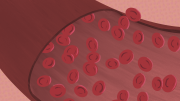Discussed in this issue of Science Fiction: do we humans use only 10 per cent of our brains?
“The statement is a myth [ . . . ] We use every part of our brain, and areas that are really busy actually try to take over nearby areas that are slightly less used, or less strong,” said Tammy Ivanco, associate professor in the department of psychology.
Brain regions overtaking neighbouring areas is an example of neuroplasticity. Neuroplasticity refers to the brain’s ability to rewire neural pathways in response to behavioural or environmental changes, such as damage through physical injury. Through these neuroplastic mechanisms, the brain can change and remodel itself throughout a lifetime.
Neuroplastic remodelling can be observed in individuals who have lost the ability to utilize a specific region of the brain. In blind individuals, the region of the brain that deals with sight, the occipital cortex, can be overtaken and utilized by regions involved in processing other senses. The efficiency of overtaking unused regions shows that the brain is invested in maximizing the use of all of its real estate.
The human brain utilizes approximately 20 per cent of oxygen breathed while only comprising roughly 2.5 percent of overall body mass. It would be strange for evolution to have allowed for the development of an organ with such a high demand on bodily resources to be 90 per cent non-functional.
Different areas of the brain have different designated functions. These different regions work in concert to act as a fully functional cohesive unit.
The most evolutionarily ancient region of the brain is the brain stem, which controls necessary life functions like breathing and heartbeat. Damage of the brain stem can be critical, possibly resulting in a vegetative state or death. Brain stem injuries are particularly concerning because this area is involved with these critical functions.
The hippocampus is a region of the brain involved in learning and memory. A compromised hippocampus is the most common cause of brain injury-related memory and learning problems. Individuals with hippocampal injury demonstrate impaired ability to learn and contextualize information.
Interestingly, individuals with hippocampal injury typically do not show perceptual and skill learning impairment. This type of procedural learning, like how to ride a bike, is associated with brain regions like the motor cortex and cerebellum. Damage to the cerebellum has been shown to impair procedural learning.
The amygdala is involved in fear and emotional reactions. This area of the brain is part of a region known as the limbic system, which is highly invested in emotions. The left amygdala of a 44-year-old man was removed due to an abnormality which was resulting in him having seizures. The man, who previously had arachnophobia (the fear of spiders) found that after the surgery, he was no longer afraid of the eight-legged arthropods.
Despite only touching on a few areas of the brain, it is clear that every process has its own place, and each brain region has its own purpose.
The human brain is organized in a very precise way to optimize and carry out its many functions.
“I think the misperception is based on the idea that our brains are capable of so much more than most of us ever accomplish,” Mark Fry, department of biological sciences assistant professor, told the Manitoban.
The idea that each of us has the potential to access some hidden untapped inactive region of the brain may be desirable, but in reality the brain is fully utilized. The brain makes use of every region that is available to it, whether the regions are sufficient or lacking. How we, as individuals, make use of our brains is another story.




